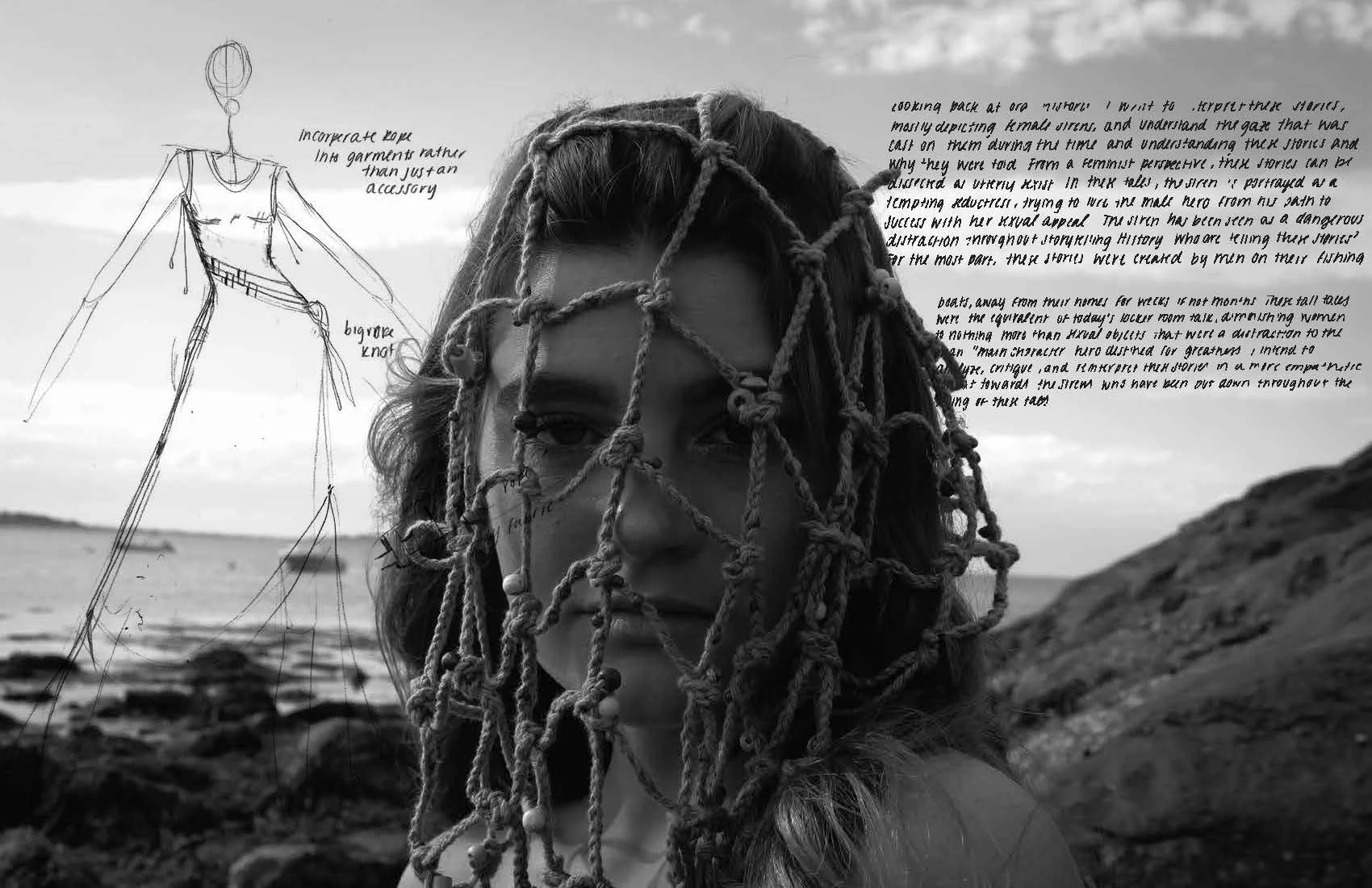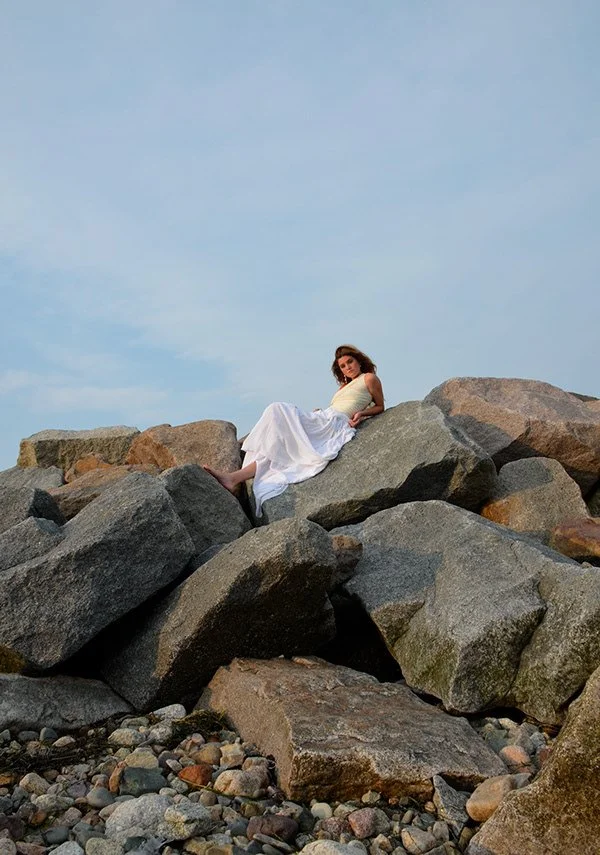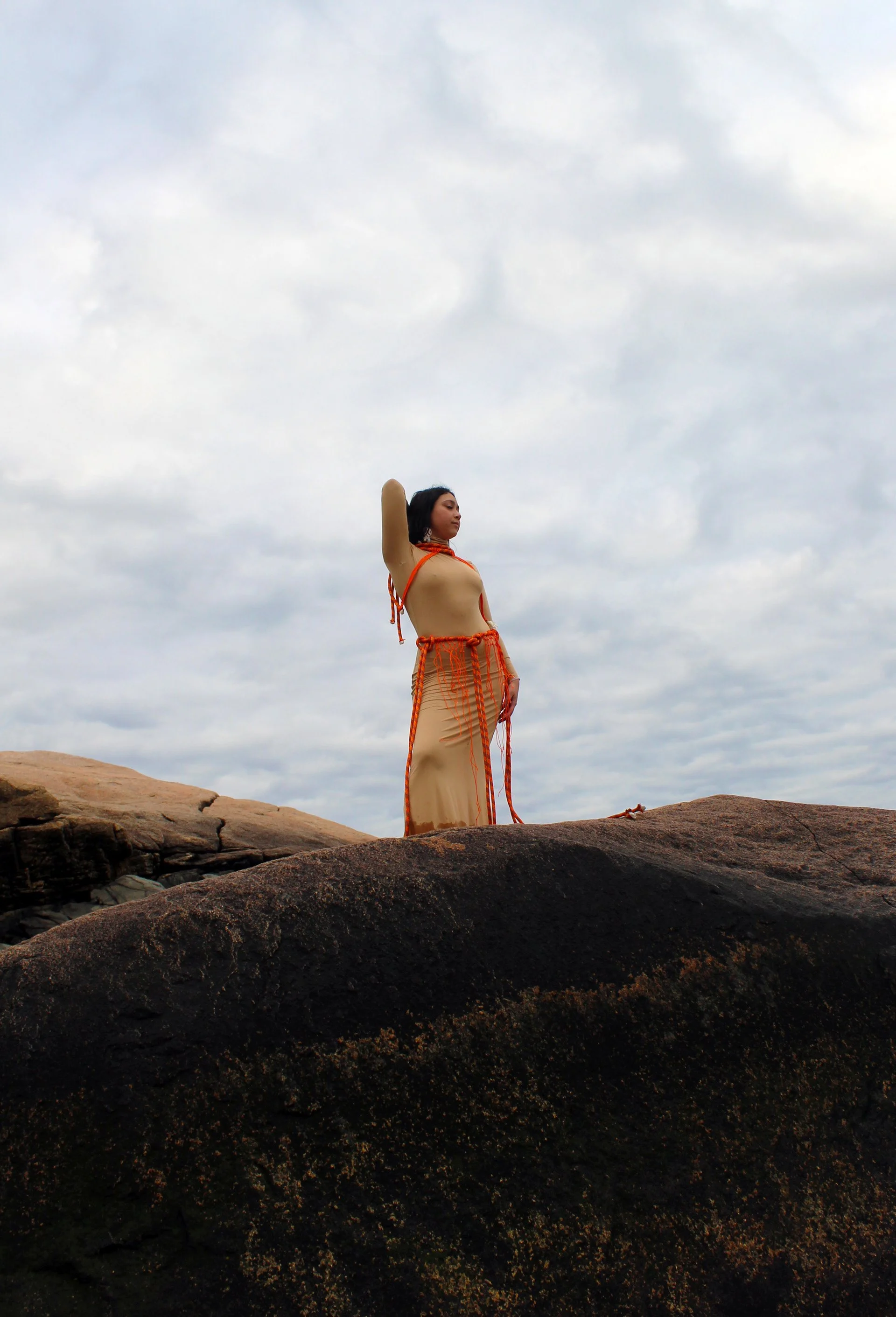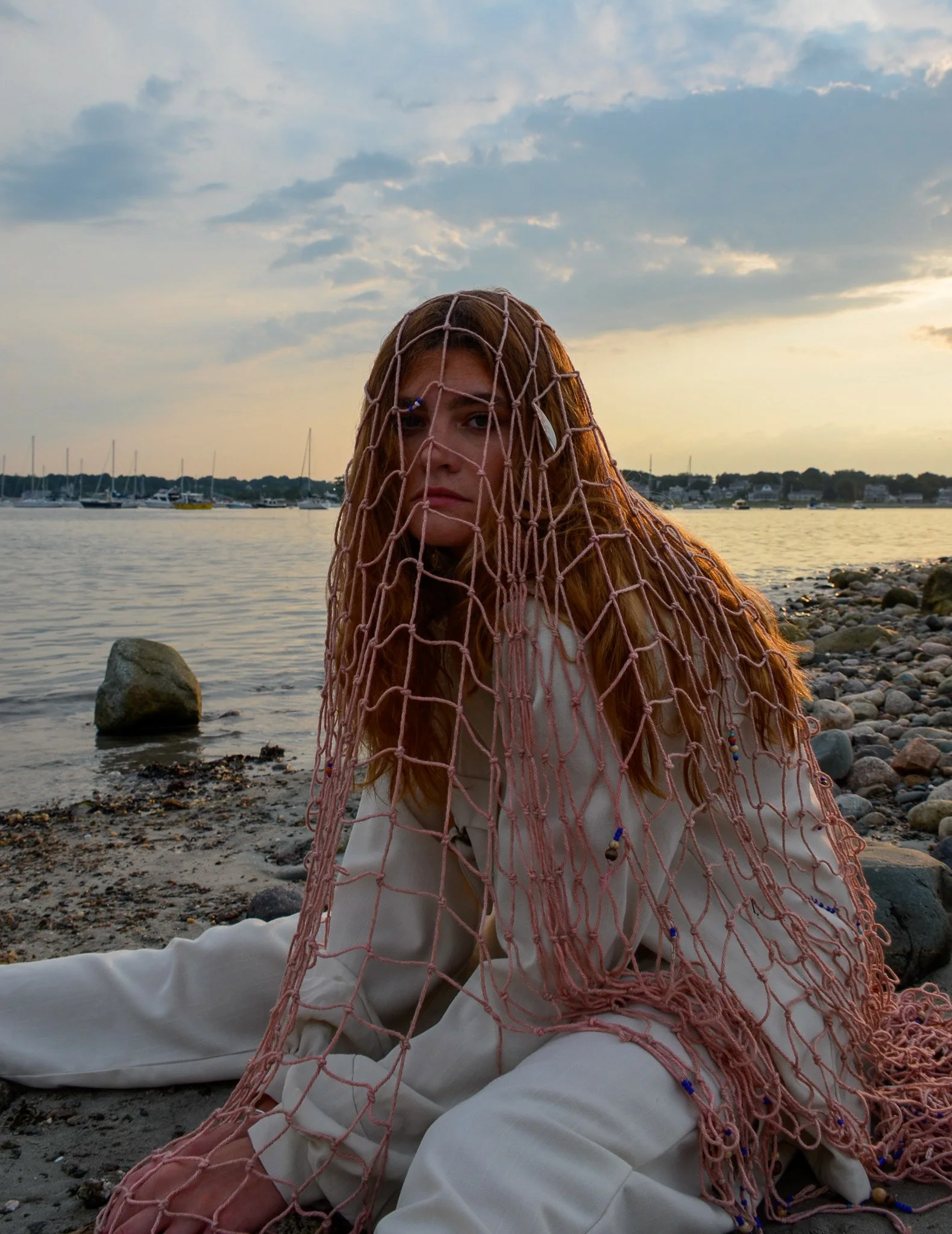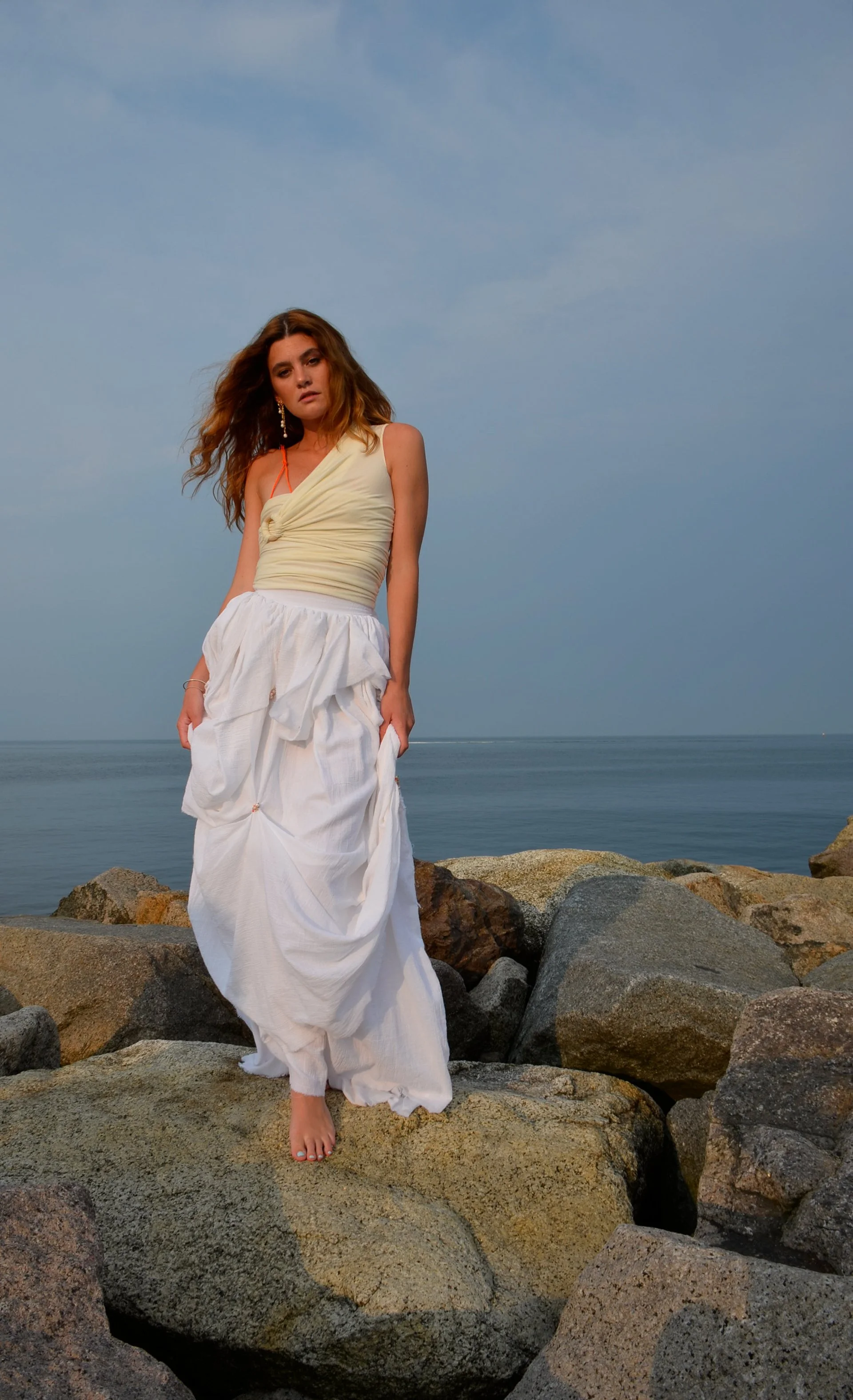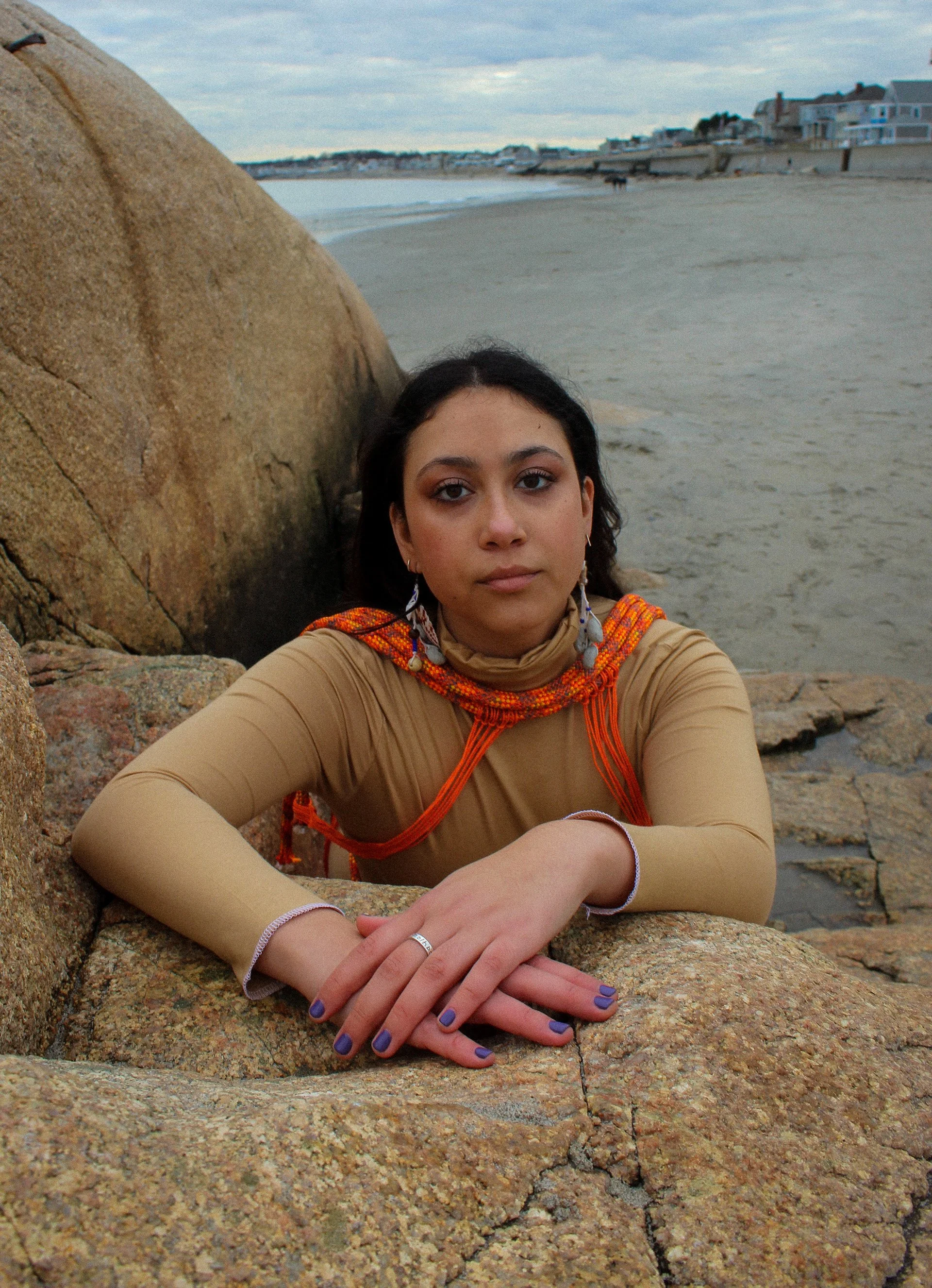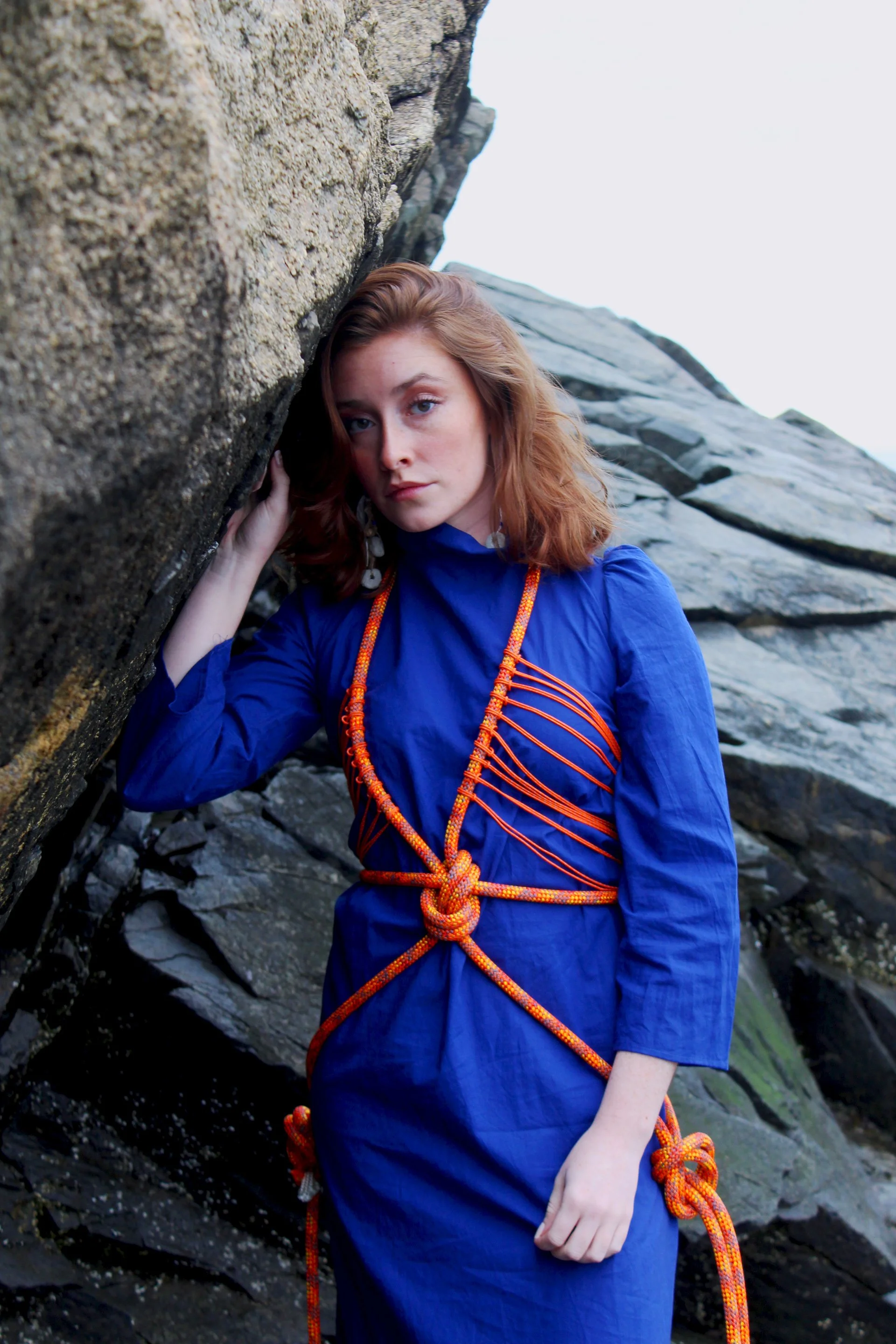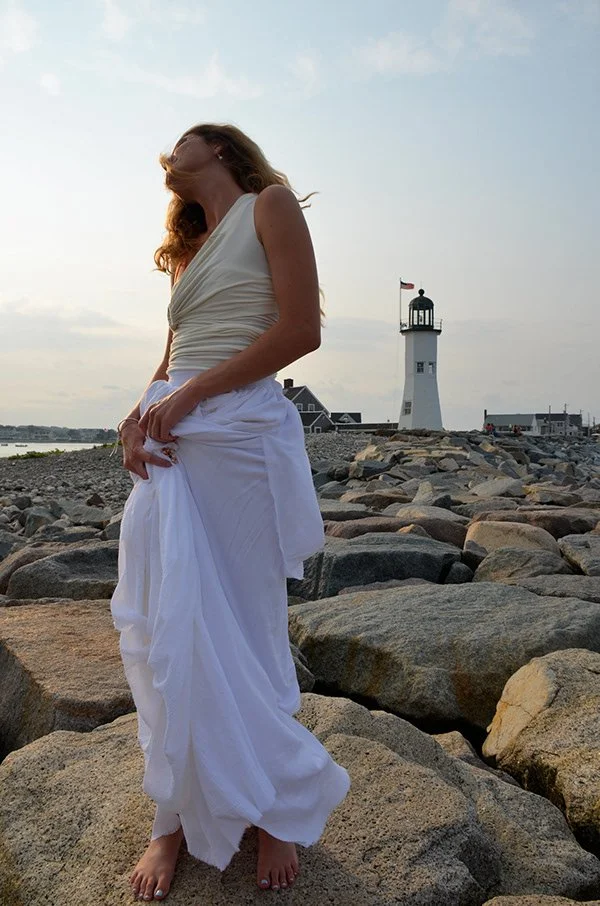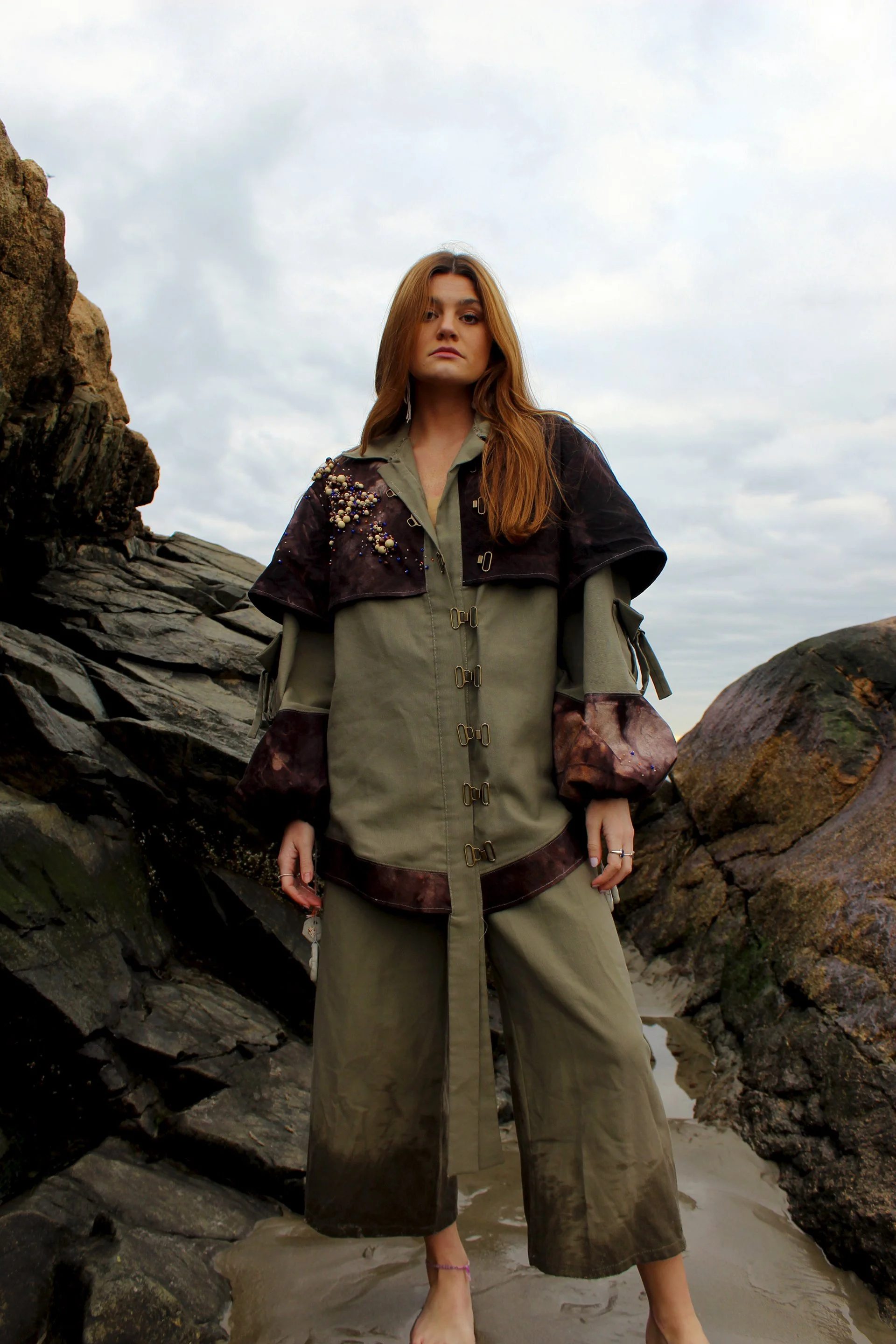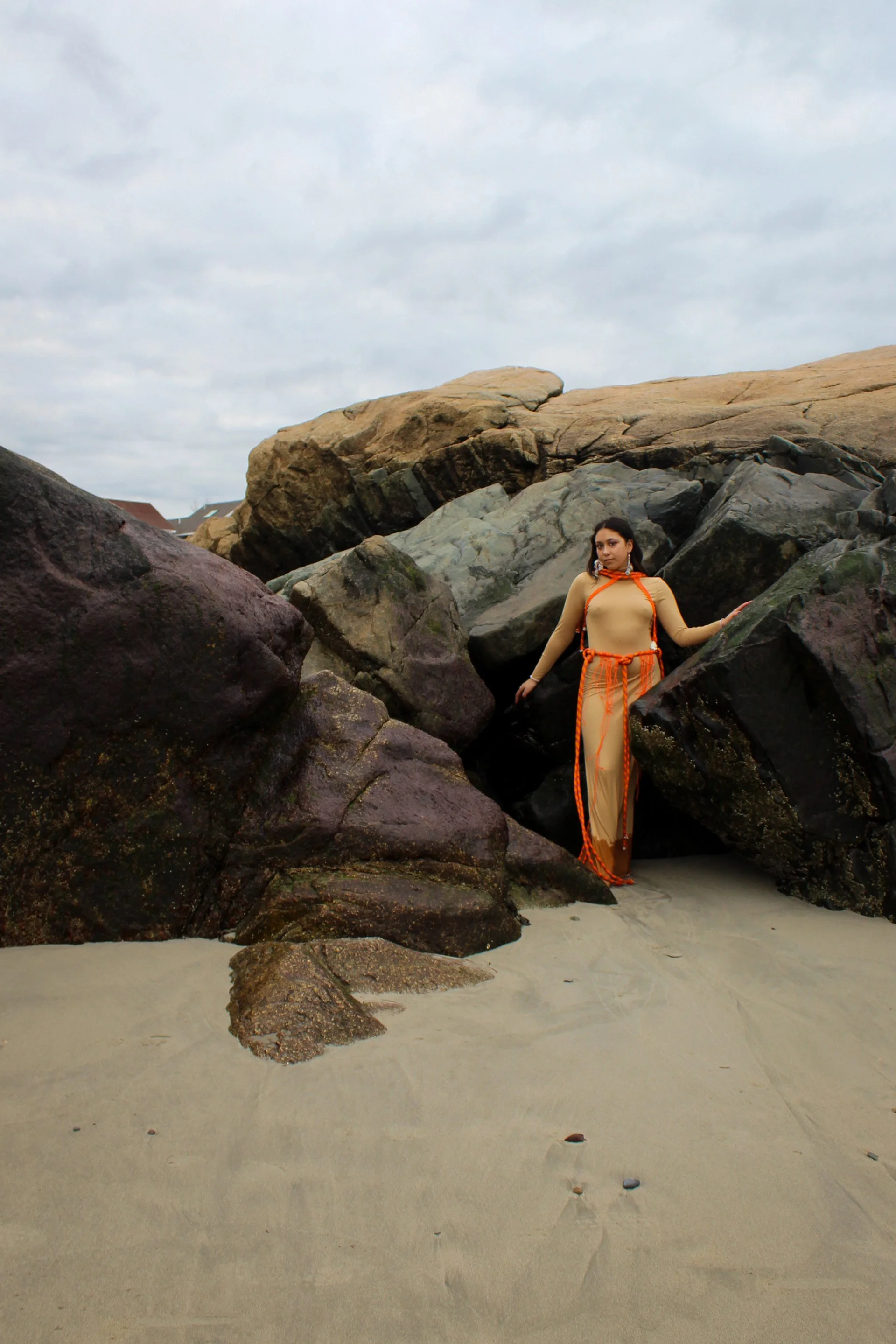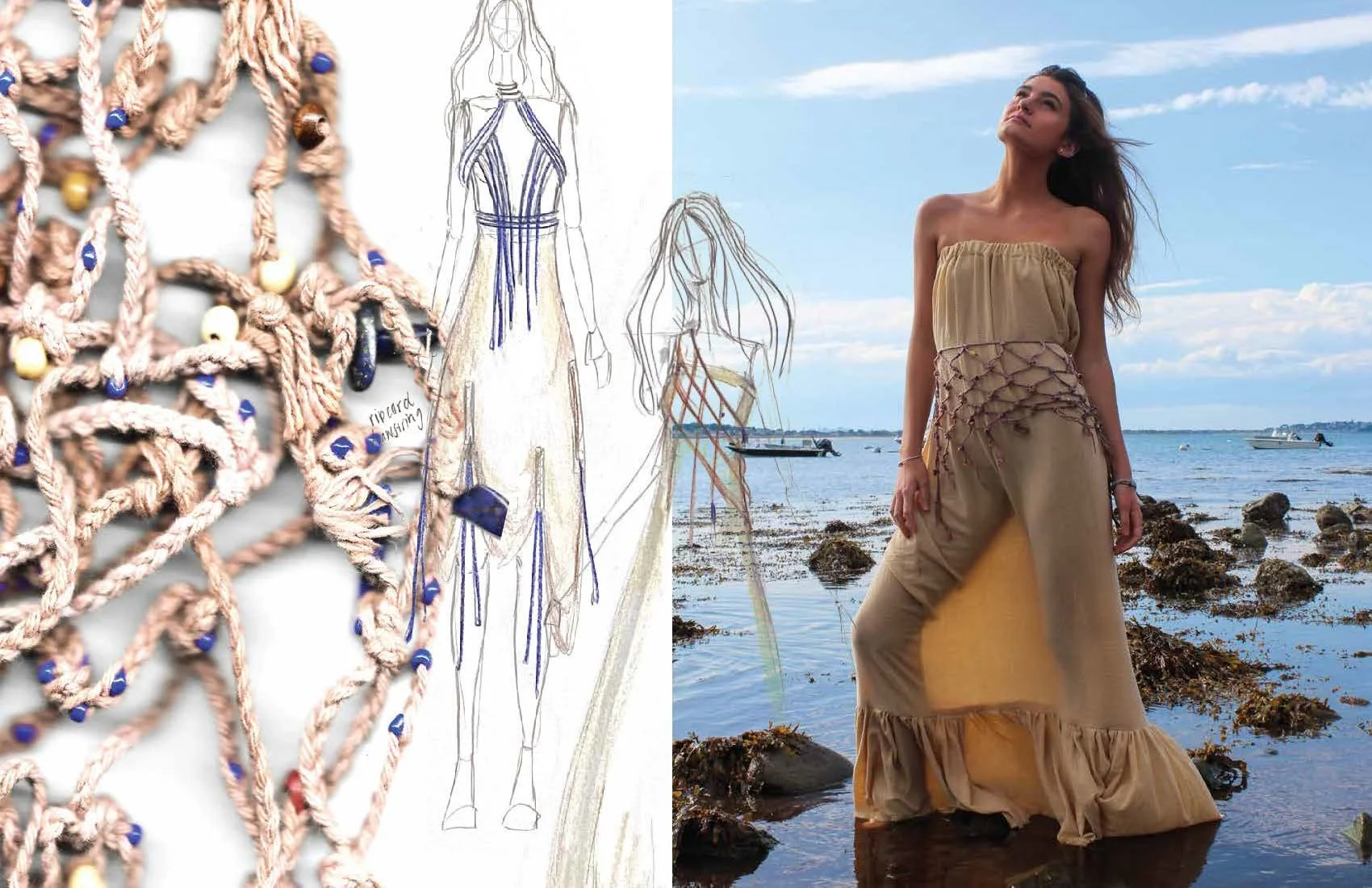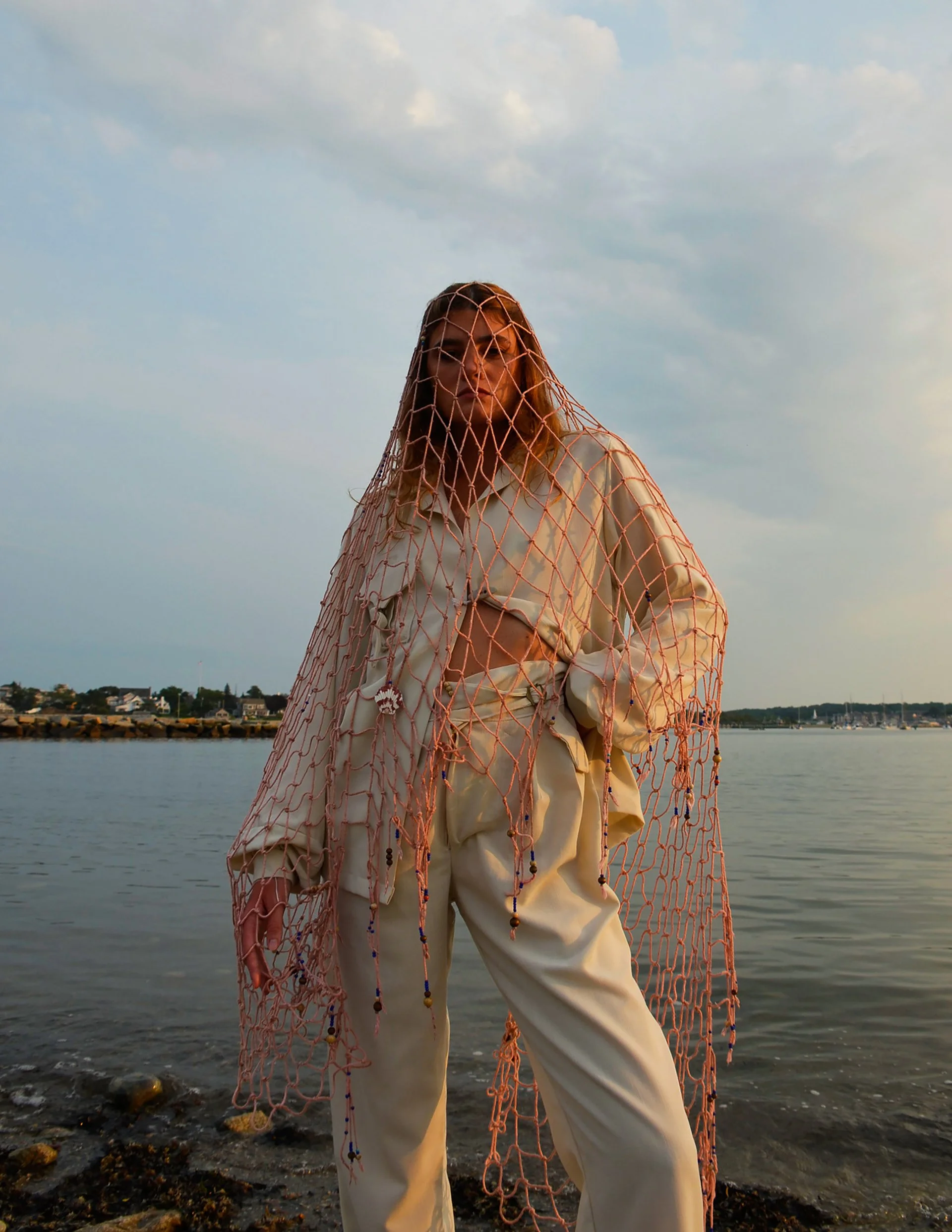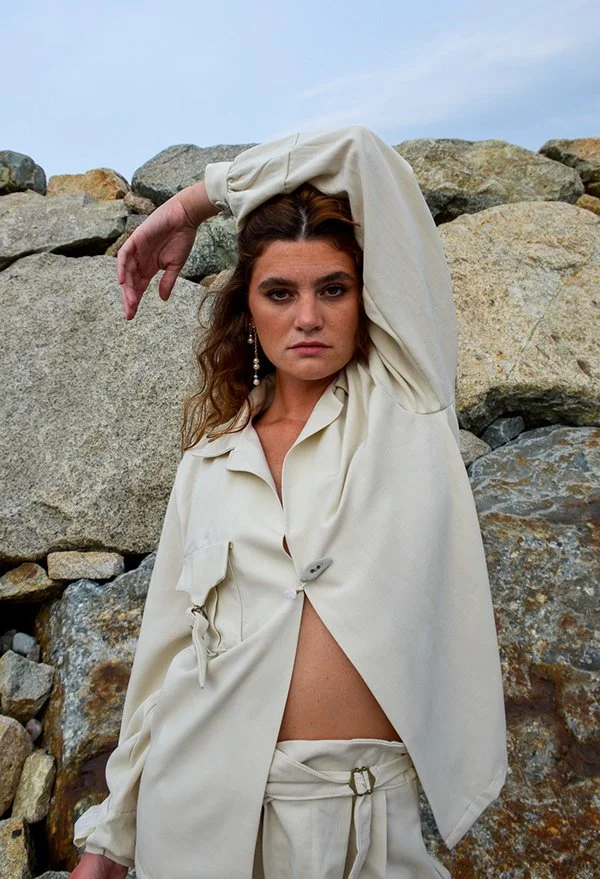In the beginning of my research process, I was interested in the fishing community that is an integral part to the history of where I was born and raised in the South Shore of Massachusetts.
This gradually led to a more far-reaching conversation outside of my personal community and I began to look at fishermen culture and oral history as a whole, analyzing literature and oral folktales transcribed by storytellers in many different parts of the world. The fantasy aspect of these stories drew me in, the monsters, sirens, all tall tales exaggerating and fantasizing the daily lives of these sailors appealed to me and brought a new facet to my research. I began looking at the ways that stories were told, as it was not necessarily always through the spoken word. Sailors spent their time on ships not only telling stories, but creating beautiful art, through macrame, drawings, and woodcut pieces. These physical arts took dedication, time, and skill, all given through their hours on the seas. I found that I had more in common with these sailors than I once thought, as my way of interpreting the world around me was also through an artistic lens. The entire crux of my design process rests on the fact that I have always synthesized academic material, research projects, and design prompts through my own artistic expression. To me, fashion is the natural progression of art and storytelling and understanding my own research.
Materiality experiments- trying to replicate the appearance of wet fabric by draping kombucha leather
Looking back to the oral history, I want to interpret these stories, mostly depicting female sirens, and understand the gaze that was cast on them during the time and understanding these stories and why they were told. From a feminist perspective, these stories can be dissected as utterly sexist. In the tales, the siren is portrayed as a tempting seductress, trying to lure the male hero from his path to success with her sexual appeal. The siren has been seen as a tempting and dangerous distraction throughout storytelling history, and I believe that is interesting from many aspects. First of all, who are telling these stories? For the most part, these stories were created by men on their fishing boats, away from their home for weeks if not months. These tall tales were the equivalent of today’s locker room talk, diminishing women to nothing more than sexual objects that were a distraction to the man “main character” male hero destined for greatness. These women were nothing but side characters, doomed to never be heroic, only beautiful and tempting. However, perhaps it is optimism, but I hope that there is some beauty within these stories. The beautiful imagery, the rich history that has woven the timeline of where these stories began to where we hear them today, should not be lost. I simply intend to analyze, critique, and reinterpret these stories in a more empathetic context towards the sirens that have been put down throughout the telling of these tales.
Throughout my series of garments and consequential artworks, I have reimagined my own stories for these sirens, ones in which they take center stage. I imagine a shipwreck, one where the sirens take over the sailors onboard, and become the heroes of the story that have been long neglected in the history of storytelling. Here these sirens confiscate the sailor’s garments, rope, supplies, and ship and make it their own. Turning their back on these stories and writing their own, the sirens can finally be the protagonists. The silhouettes can be described as feminine reinterpretation of masculine concepts. I use traditional materials used in fishermen culture, such as rope, concrete, net, waxed cotton, and canvas, reinterpreted in a feminine style in the siren mystique. As the work evolves, I hope to create my own stories as well as draw upon the traditional fisherman folktales from around the world and express them through a myriad of art forms that all relate to my personal artistic mark, through garment creation, painting, printmaking, film, and photography.


